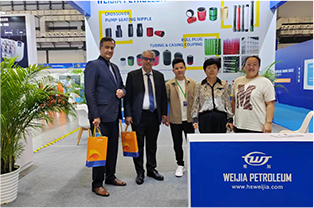- Afrikaans
- Albanian
- Amharic
- Arabic
- Armenian
- Azerbaijani
- Basque
- Belarusian
- Bengali
- Bosnian
- Bulgarian
- Catalan
- Cebuano
- Corsican
- Croatian
- Czech
- Danish
- Dutch
- English
- Esperanto
- Estonian
- Finnish
- French
- Frisian
- Galician
- Georgian
- German
- Greek
- Gujarati
- Haitian Creole
- hausa
- hawaiian
- Hebrew
- Hindi
- Miao
- Hungarian
- Icelandic
- igbo
- Indonesian
- irish
- Italian
- Japanese
- Javanese
- Kannada
- kazakh
- Khmer
- Rwandese
- Korean
- Kurdish
- Kyrgyz
- Lao
- Latin
- Latvian
- Lithuanian
- Luxembourgish
- Macedonian
- Malgashi
- Malay
- Malayalam
- Maltese
- Maori
- Marathi
- Mongolian
- Myanmar
- Nepali
- Norwegian
- Norwegian
- Occitan
- Pashto
- Persian
- Polish
- Portuguese
- Punjabi
- Romanian
- Russian
- Samoan
- Scottish Gaelic
- Serbian
- Sesotho
- Shona
- Sindhi
- Sinhala
- Slovak
- Slovenian
- Somali
- Spanish
- Sundanese
- Swahili
- Swedish
- Tagalog
- Tajik
- Tamil
- Tatar
- Telugu
- Thai
- Turkish
- Turkmen
- Ukrainian
- Urdu
- Uighur
- Uzbek
- Vietnamese
- Welsh
- Bantu
- Yiddish
- Yoruba
- Zulu
API 5CT Tubing Couplings for Oil and Gas Industry Applications and Standards
Understanding API 5CT Tubing Couplings An Overview
In the oil and gas industry, the efficiency and safety of operations heavily depend on the quality of equipment and materials used. One of the critical components in drilling operations is the tubing system, wherein API 5CT tubing couplings play a pivotal role. The American Petroleum Institute (API) established specifications for seamless and welded steel pipes, particularly focusing on specifications for casing and tubing used in oil and gas wells. API 5CT specifically addresses the manufacturing properties of these tubular goods, which are essential for the integrity and performance of downhole operations.
What is API 5CT?
API 5CT is a standard adopted by the American Petroleum Institute for casing and tubing used in wells. This specification covers the requirements for nominal wall thickness steel pipe, which is designed to withstand the extremely high pressures encountered in oil and gas extraction. The standard includes various grades of steel and offers guidelines on the chemical composition, mechanical properties, and testing procedures for the material used.
Importance of Tubing Couplings
Tubing couplings serve as vital connectors in the tubing string. They link the individual sections of the tubing together, which can be comprised of multiple lengths of pipe fitted together to create a continuous system that transports oil or gas from the well to the surface. The coupling must ensure structural integrity and prevent leaks, thereby protecting the environment and improving operational efficiency.
Features and Specifications
API 5CT tubing couplings are manufactured under specific grades outlined in the API 5CT specification. Common grades include H40, J55, K55, N80, C90, L80, and P110, each with unique tensile strength and yield strength qualities. The choice of coupling grade typically depends on the operational environment and characteristics of the material being extracted.
The couplings can be categorized into two major types coupling and integral. Regular couplings are separate components that are threaded onto the ends of the tubing, while integral couplings are manufactured as part of the tubing itself, providing a stronger connection. Couplings are designed with various threading types, including buttress and round threads, depending on the requirements of the specific application.
api 5ct tubing coupling

Manufacturing Process
Manufacturing API 5CT tubing couplings involves several steps to ensure they meet the stringent specifications required for oil and gas applications. Generally, they include the following processes
1. Material Selection Choosing the right alloy steel is crucial; it must possess adequate strength, ductility, and resistance to environmental factors such as corrosion and wear.
2. Machining The raw material undergoes precise machining to achieve the necessary dimensions and socket configurations that fit the tubing ends.
3. Threading Threads are cut into the couplings, which must meet the specific API standards. Quality control checks ensure the threads fit tightly and can withstand high pressure without failing.
4. Inspection and Testing Once manufactured, couplings undergo various tests including tensile testing, hydrostatic testing, and non-destructive testing to ensure they can handle the operational demands they will face once in the field.
5. Certification Finally, after passing all tests, couplings are certified, allowing them to be used for API 5CT compliant applications.
Conclusion
API 5CT tubing couplings are an essential component of the tubular goods used in the oil and gas industry, contributing to the safety and efficiency of drilling operations. Their strength and structural integrity are crucial for reducing the risk of failure during operation, which can lead to costly downtime and environmental hazards. Understanding the characteristics, manufacturing processes, and specifications of API 5CT couplings provides insight into their critical role in ensuring successful oil and gas extraction. As the industry continues to evolve, the demand for reliable and advanced coupling technologies will remain paramount.
-
Well Casing Extension Couplings – Applications and InstallationNewsJun.06,2025
-
Types of Crossover Subs in Drilling & CompletionNewsJun.06,2025
-
Key Features of High-Quality Tubing Pup JointsNewsJun.06,2025
-
Installation and Maintenance Tips for Steel Couplings for PipeNewsJun.06,2025
-
How to Select the Right Pup Joint for Oil & Gas OperationsNewsJun.06,2025
-
Applications of Stainless Steel Pipe CouplingsNewsJun.06,2025







